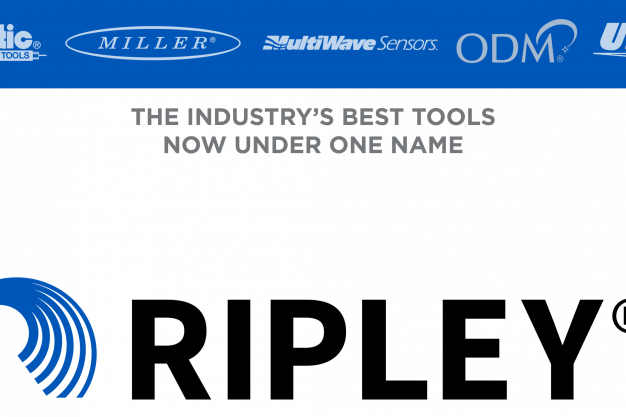
Ripley Tools unveils updated branding to reflect Ripley’s solutions leadership
24th January, 2024
Since 1936, Ripley Tools has been leading the way in the design and manufacture of equipment, tools and technology for power and
As a growing number of applications come to rely on fiber optic networks, the fiber industry is evolving at a rapid pace. This means that engineers are already facing new challenges and opportunities in their day-to-day work, and as rollout gains momentum, new innovations are set to change the way they work even further.
At Ripley Tools, we are here to support fiber engineers now and in the future. So let’s take a look at some of the innovations set to change the industry over the coming years, and how they could impact engineers. Innovations like…
5G networks
As 5G mobile broadband networks are rolled out across the globe, these next-generation networks will significantly increase demand for optical fiber cables. 5G uses a high-frequency signal which does not travel over long distances, which means that a much greater number of fiber optic base stations will need to be developed and installed in order to support the 5G rollout.
Traditional copper-based networks will be unable to support the bandwidth 5G requires. Fiber optic cables will therefore be used to connect the new, more densely packed base stations, as fiber enables increased speeds of data transfer with lower attenuation, it can be densely packed into cables, and it can provide almost unlimited bandwidth. This means that demand for fiber engineers will increase significantly in line with 5G rollouts.
Hollowcore fiber
Unlike traditional optical fiber, which sends light signals through solid glass, the light inside hollowcore fiber travels through the air in the fiber’s hollow core. Light travels more quickly through air than through glass, and this means that data signals can travel around 50% faster through hollowcore fiber cables.
Hollowcore fiber has been in existence for around two decades, but it’s only In recent years that it has been developed to reduce previous performance issues. Last year, one of the UK’s leading operators, BT, trialled hollowcore fiber and found that it delivered a number of potential benefits, such as reduced latency and no crosstalk. While hollowcore fiber is likely to need further development before it is used in mainstream applications – the loss per kilometer is still around 1 decibel, for example, compared to 0.2 dB/km for traditional single mode fiber – it seems likely that engineers will be working with more hollowcore fiber cables in the future, and at Ripley® it’s a development we’ll be keeping a close eye on from a tool invention perspective.
Point-to-point cable runs
One of the most pressing challenges facing carriers today is the need to install fiber within Multi-Dwelling Units (MDUs) like hotels and apartment buildings. Carriers need to be able to provide the same capacity and speeds to MDUs as they do to Single Dwelling Units (SDUs), but installing fiber optic cable within MDUs can be much more time-consuming and expensive.
So far, most carriers have tasked their engineers with blowing fiber optic cable from the basement of an MDU to each floor. They are then required to create a splice via the termination box, before running a separate fiber optic cable to each apartment on that floor. This not only takes a long time for engineers to carry out, but it often requires engineers to install new ducts and fiber termination equipment. Carriers are therefore beginning to switch to point-to-point installation, in which engineers run the fiber optic cable directly from the basement to each individual apartment. This removes the need to splice the cable at each floor, and eliminates the risk of a single point of failure causing issues for multiple customers. However, it does make cable management more intricate and complex. Depending on their ability to splice, engineers may differ on whether or not they welcome the adoption of this new installation technique. Either way, tools such as our MSAT-X have been specifically designed with MDU and FTTx work in mind – you can learn more here.
Pioneering tools
As installation methods, cables and network configurations change, fiber optic engineers are relying on their tools to evolve too, to help them to keep up with innovation across the industry. At Ripley Tools, our specialist engineers are constantly working to develop pioneering tools that empower fiber optic engineers to work efficiently, precisely and safely no matter what fresh challenges a project might present them with.
Tools like our MBO7 RocketRibbon™ Cable Slitter, which has been engineered with a factory-set, highly precise blade depth that enables engineers to quickly and easily access fiber subunits and ripcords without damaging the delicate, densely-packed fibers. Engineers also love our cutting edge MB08 Fiber Jacket Shaving Tool, as its unique vertical handle gives them the ability to work efficiently even where space is restricted.
If you’re interested in investing in tools that will help you to carry out your best work as the industry continues to evolve, discover our full range of fiber optic cable tools today.